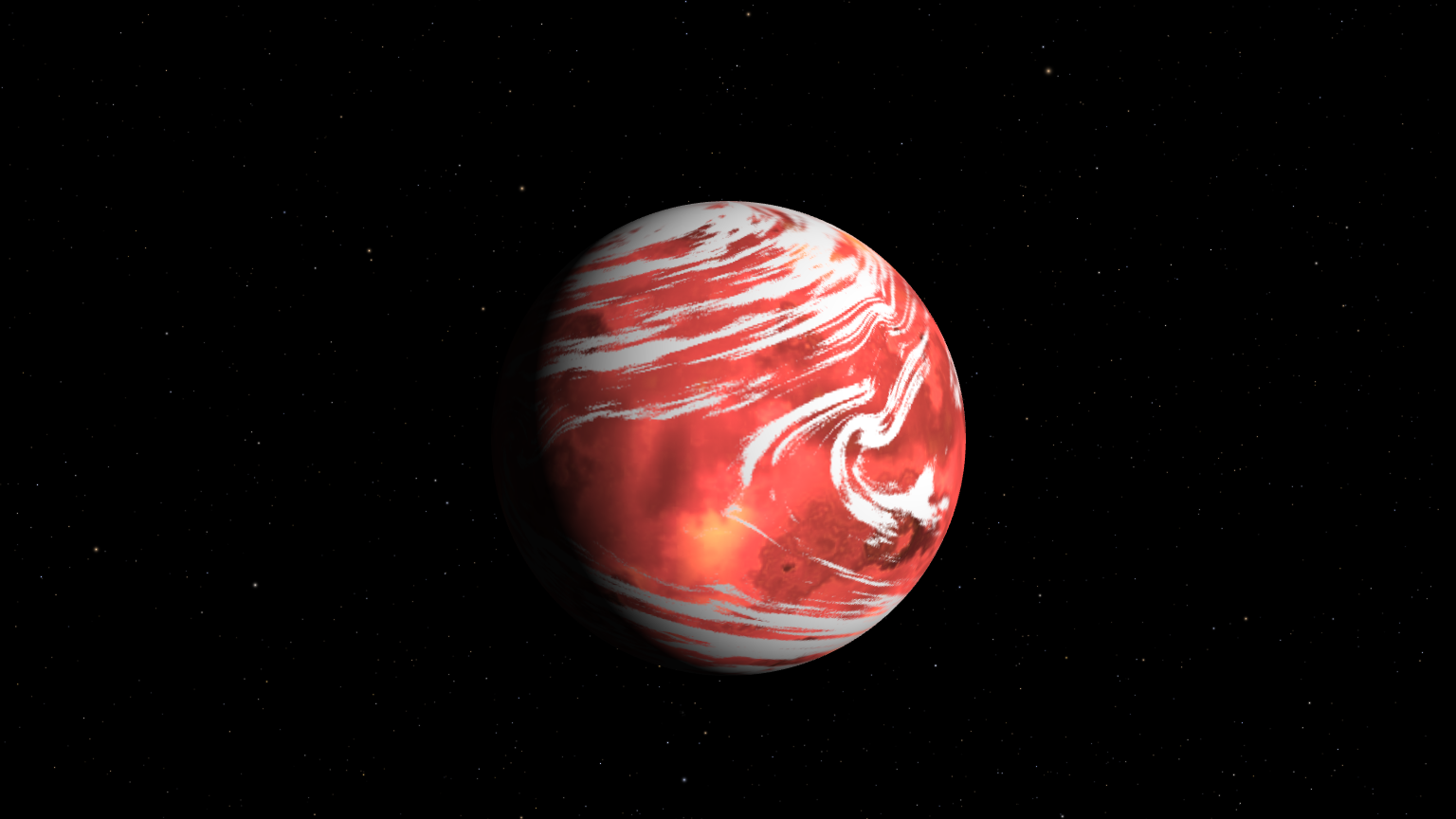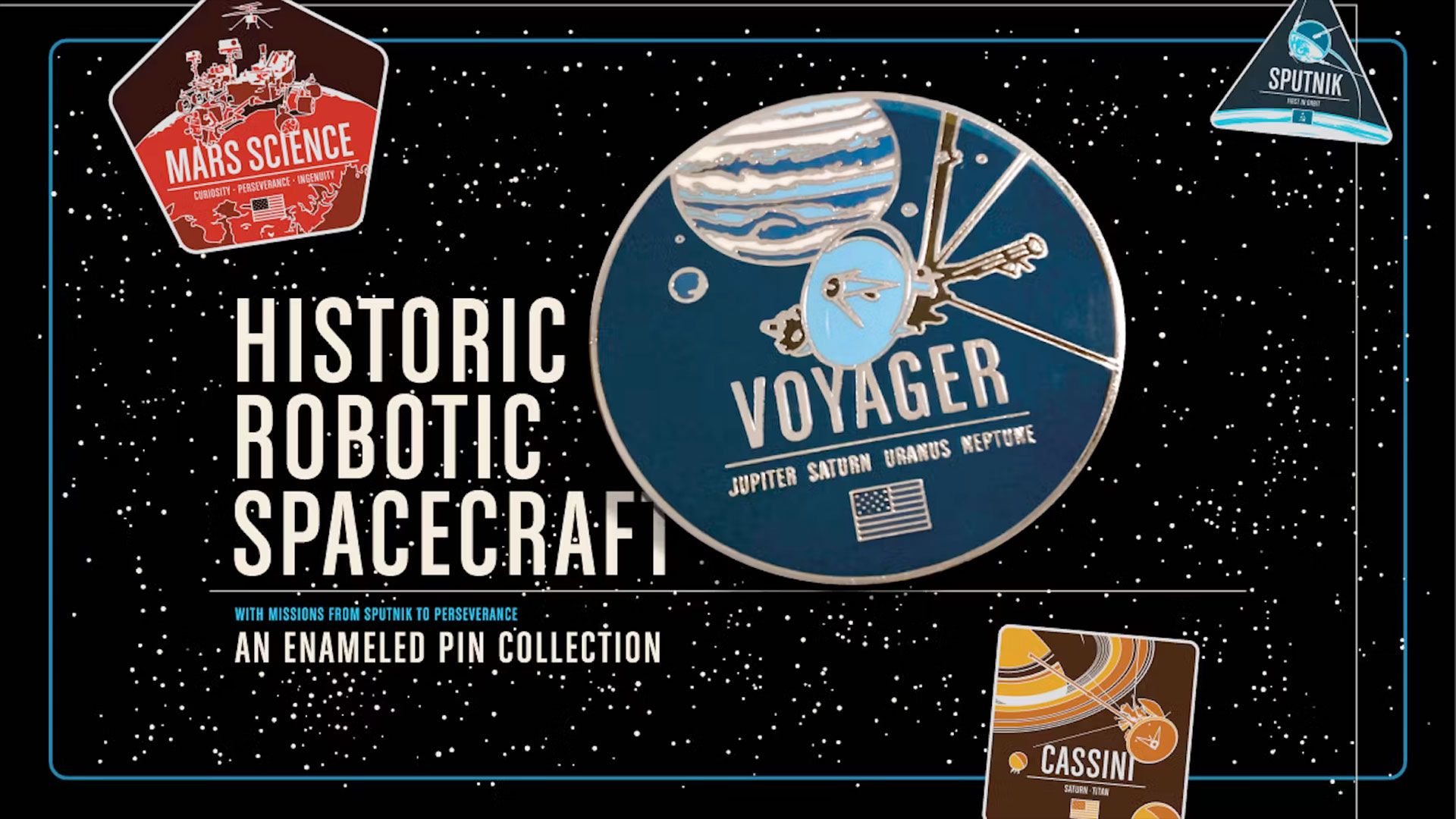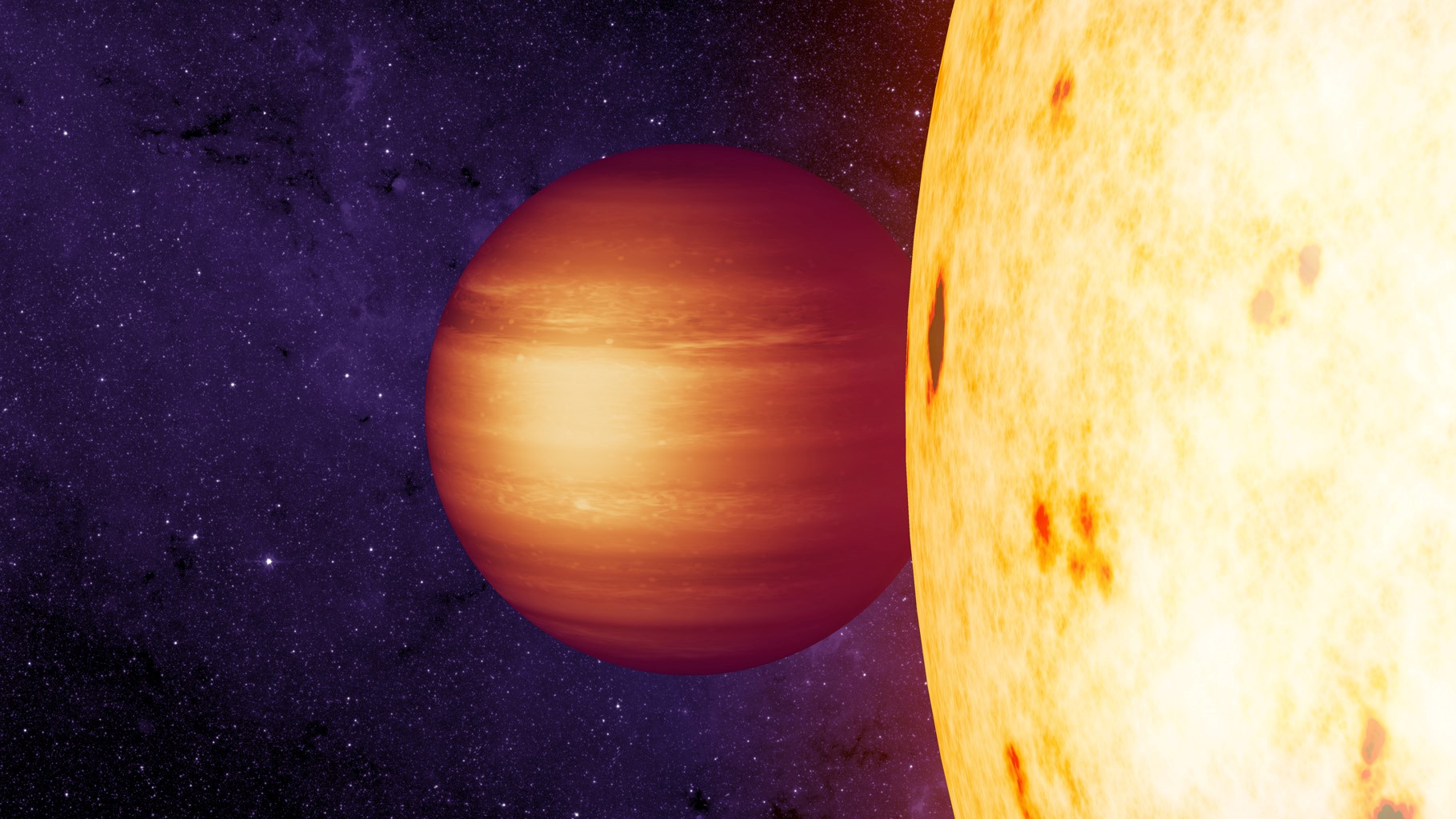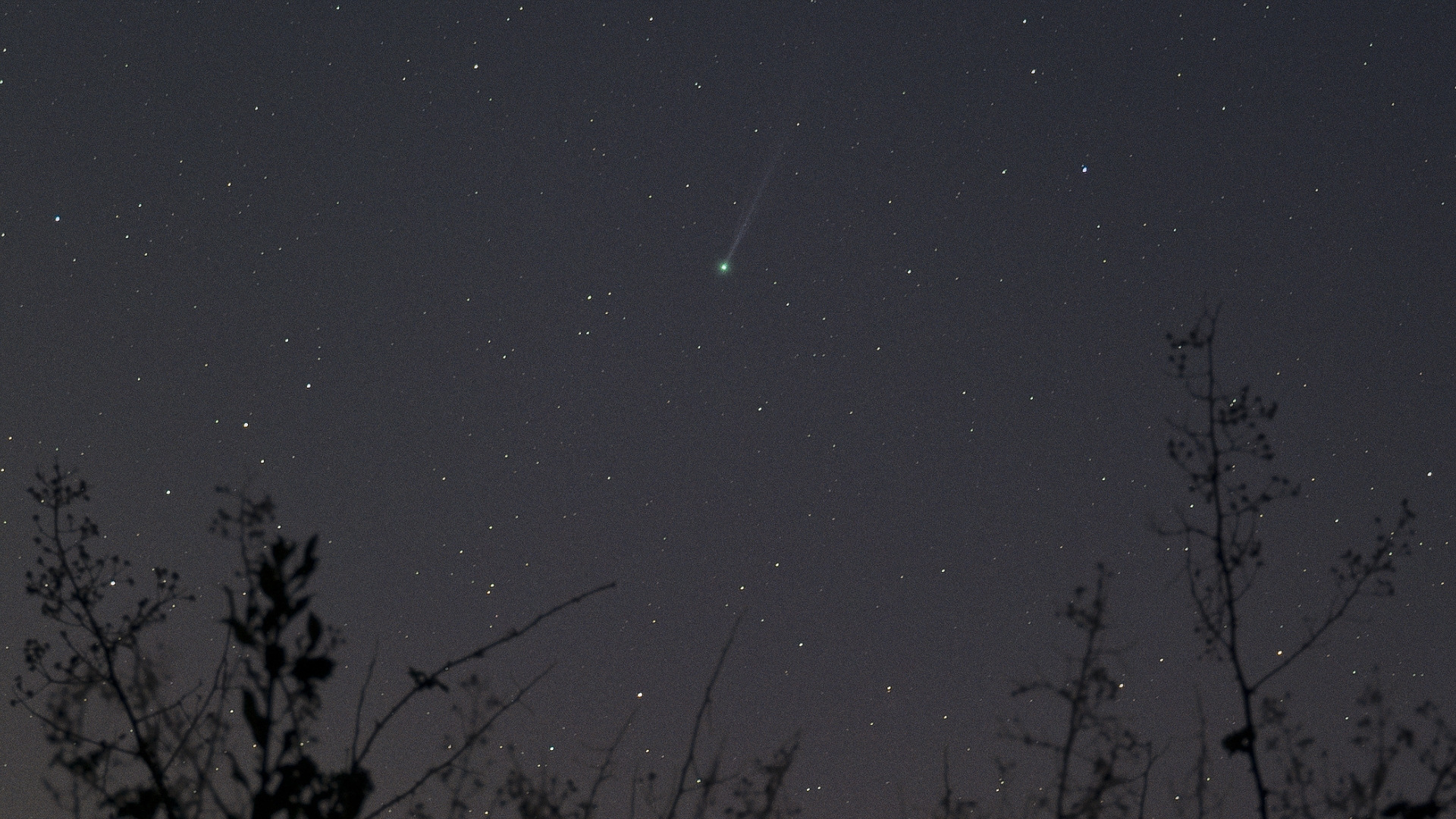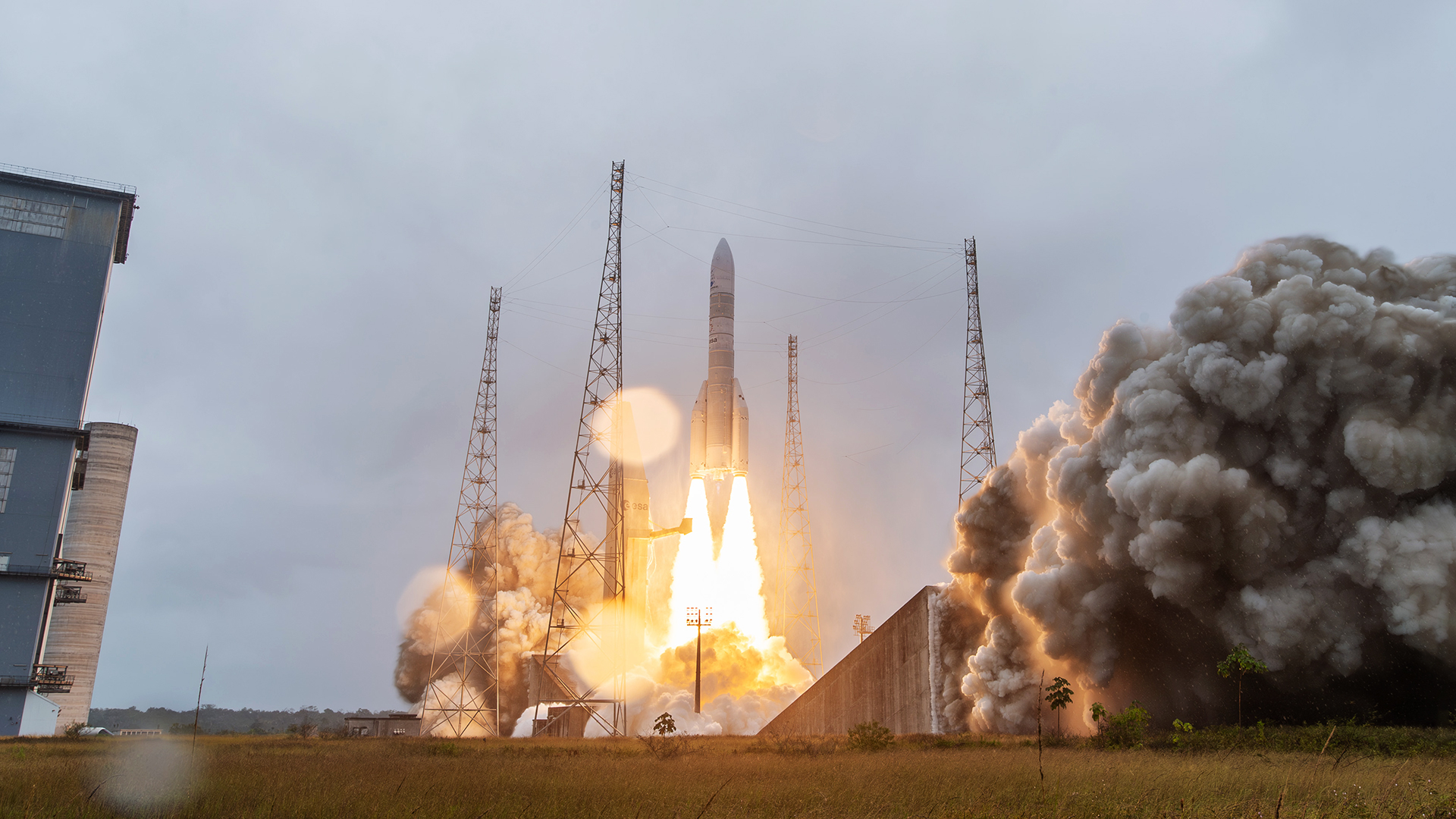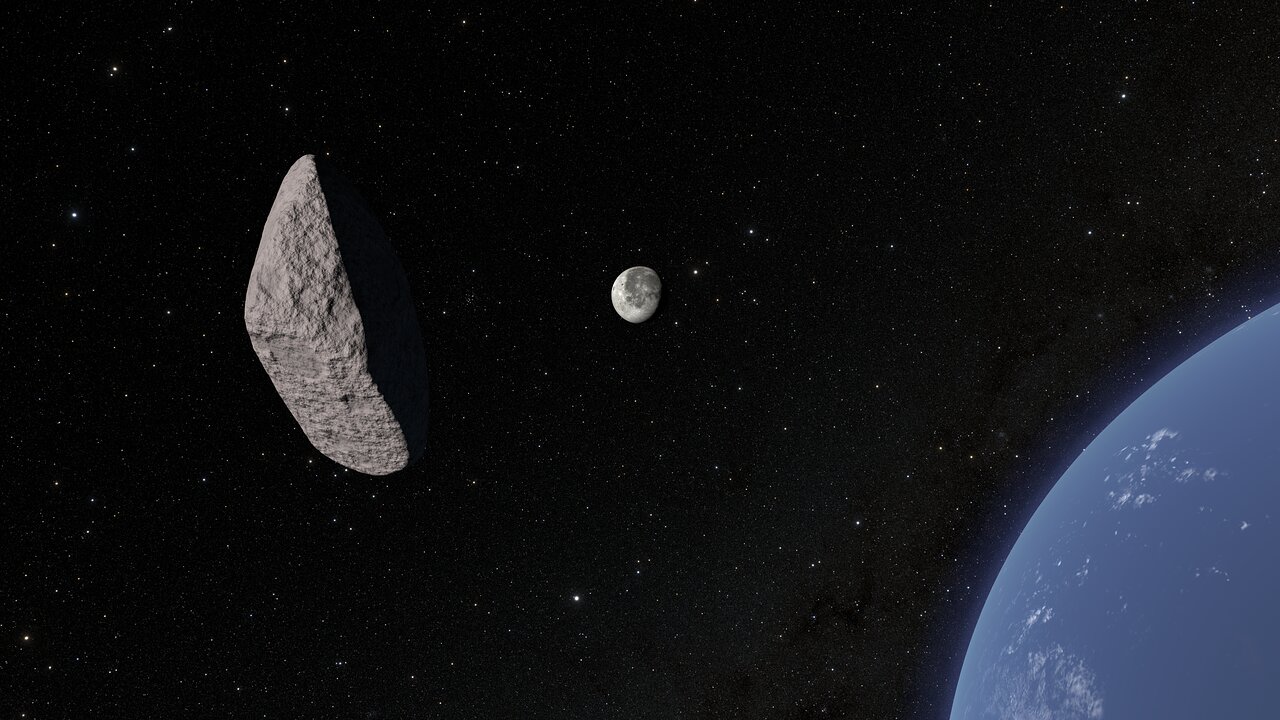Black holes could 'bend it like Beckham' to reveal hidden asymmetries of the universe
"This cosmic soccer game is far from over!"
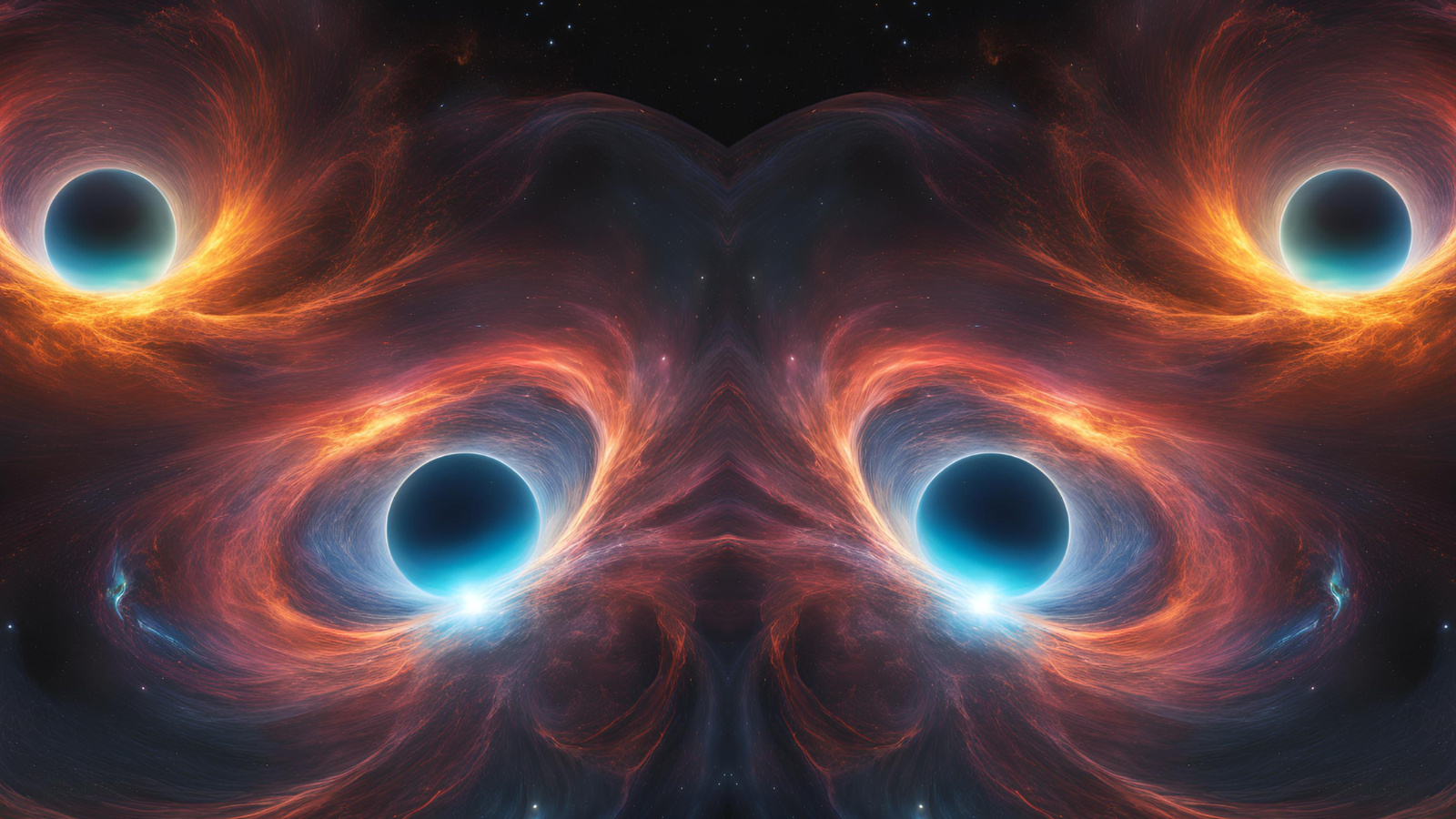
By observing tiny ripples in spacetime called "gravitational waves" that propagate away from colliding black holes, scientists could reveal hidden asymmetries in the universe.
The team behind new research on the topic suggests that measuring whether gravitational waves from black hole mergers are right- or left-handed can tell us if the Cosmological Principle — an absolute pillar of astronomy — holds true.
The Cosmological Principle states that when the universe is viewed on vast scales, it should be made of the same stuff in all directions. In other words, the cosmos should appear "isotropic and homogeneous." That means the universe shouldn't display a preference for stuff that spins clock or anti-clockwise. There should be mirror symmetry in the universe, and that includes the gravitational waves coming from black hole mergers.
Now, a team of scientists has measured the ripples in spacetime as they surge outwards from black hole mergers, which may be correlated to the direction the daughter black holes recoil from "kicks" delivered during these events.
"Einstein's equations for gravity, which rules the universe's large-scale behavior, allow a left- [and right-] handed gravitational source per each one of the opposite handedness," Adrian del Rio, team member and a researcher at the University Carlos III of Madrid, said in a statement. "These equations, however, do not require the existence of both types of sources with the same proportions in our universe. Our work allows us to test whether gravity or our universe has 'hidden' mechanisms to produce asymmetries."
Scoring goals and growing black holes
If this all sounds terribly complicated, team leader Juan Calderón Bustillo of the University of Santiago de Compostela and his colleagues have an easy-to-understand analogy.
"In soccer, there are two main ways to kick the ball with either the inner or outer part of the foot," Bustillo said in the statement. "The first will cause the ball to spin anticlockwise; think of David Beckham's famous freekicks, while the opposite will induce the opposite spin. Think of Modric or the young superstar Lamine Yamal, who masters this move."
Bustillo added that most shots, crosses and passes, however, are made with the inner side of the foot, as this makes it considerably easier to control the ball. In other words, soccer doesn't have mirror symmetry; there is a preferred anticlockwise direction in the game.
"This induces an asymmetry between the two types of spins, making soccer 'mirror asymmetric,'" Bustillo said. "If our standard assumptions about the universe and gravity hold, this should not happen to the waves emitted by black-hole mergers in the universe."
Get the Space.com Newsletter
Breaking space news, the latest updates on rocket launches, skywatching events and more!
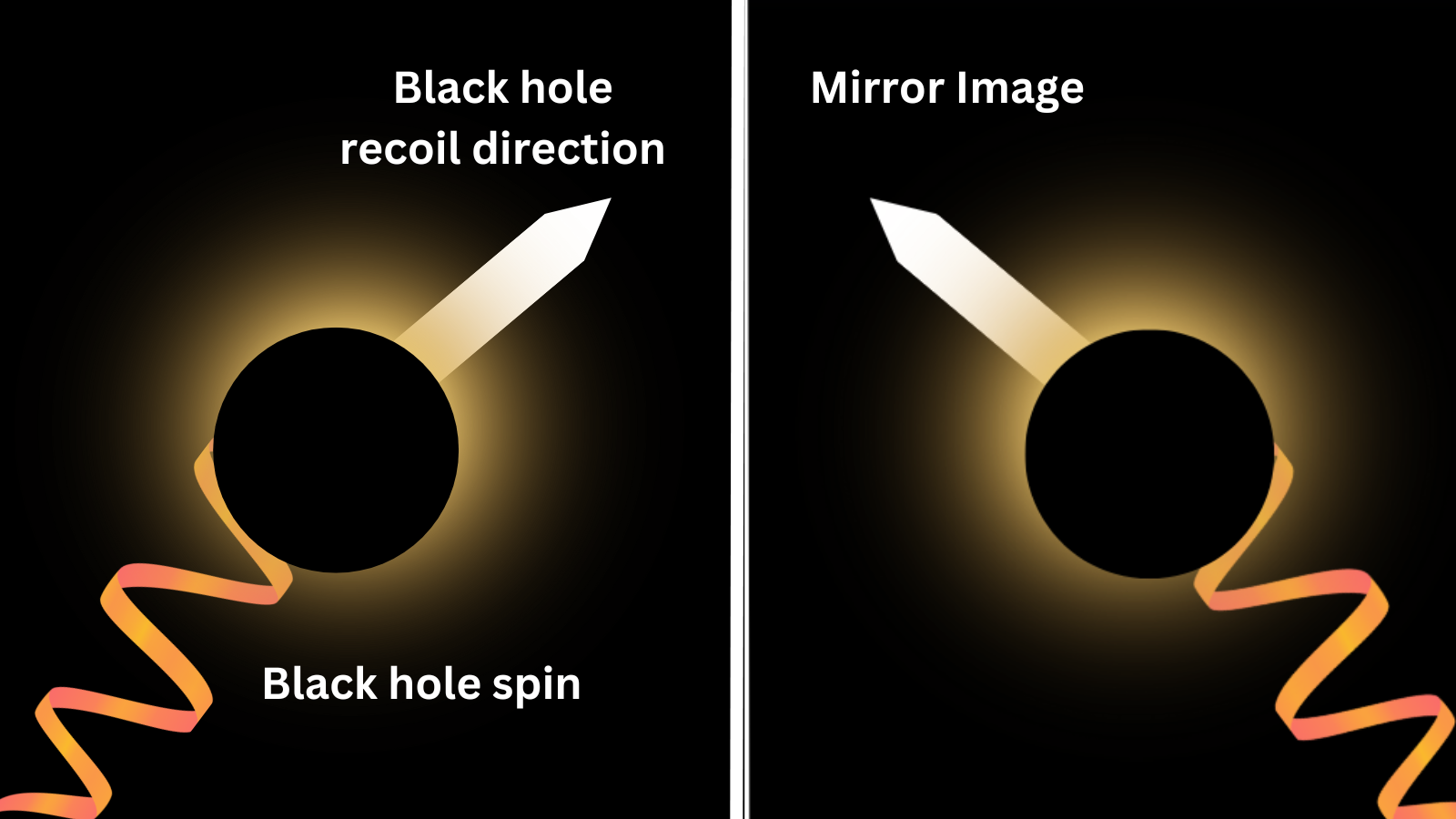
Additionally, the daughter black hole created in the merger also has spin, and just as with a kicked soccer ball, this can be either right-handed or left-handed with respect to its direction of motion. Separate research indicates that, like a kicked soccer ball, the direction in which the gravitational waves are orientated is related to the direction of the "kick" the merger-created daughter black hole receives.
If black holes follow the example of the legendary Manchester United winger David Beckham and "bend like Beckham," if you will, our theories of the universe will be significantly impacted.
Gravitational waves lend a hand
The origin of gravitational waves goes back to 1915 and Albert Einstein's magnum opus theory of gravity. Known as general relativity, this theory flipped the table on physics by suggesting gravity arises from the curvature of spacetime generated by objects with mass.
Einstein went further, however. He also suggested that accelerating objects set the fabric of spacetime "ringing" with "gravitational radiation," or gravitational waves. Though mundane events such as accelerating bicycles are too insignificant to create gravitational waves, violent cosmic events like supernovas and merging black holes do. In fact, even the Big Bang that created the universe did.
Einstein believed this radiation was too faint to ever be detected here on Earth.
However, since 2015, the Laser Interferometer Gravitational-wave Observatory (LIGO) and Virgo gravitational wave observatories have been proving the great physicist wrong by actually detecting ripples in spacetime that stem from powerful events such as the collisions and mergers of supermassive black holes and neutron stars.
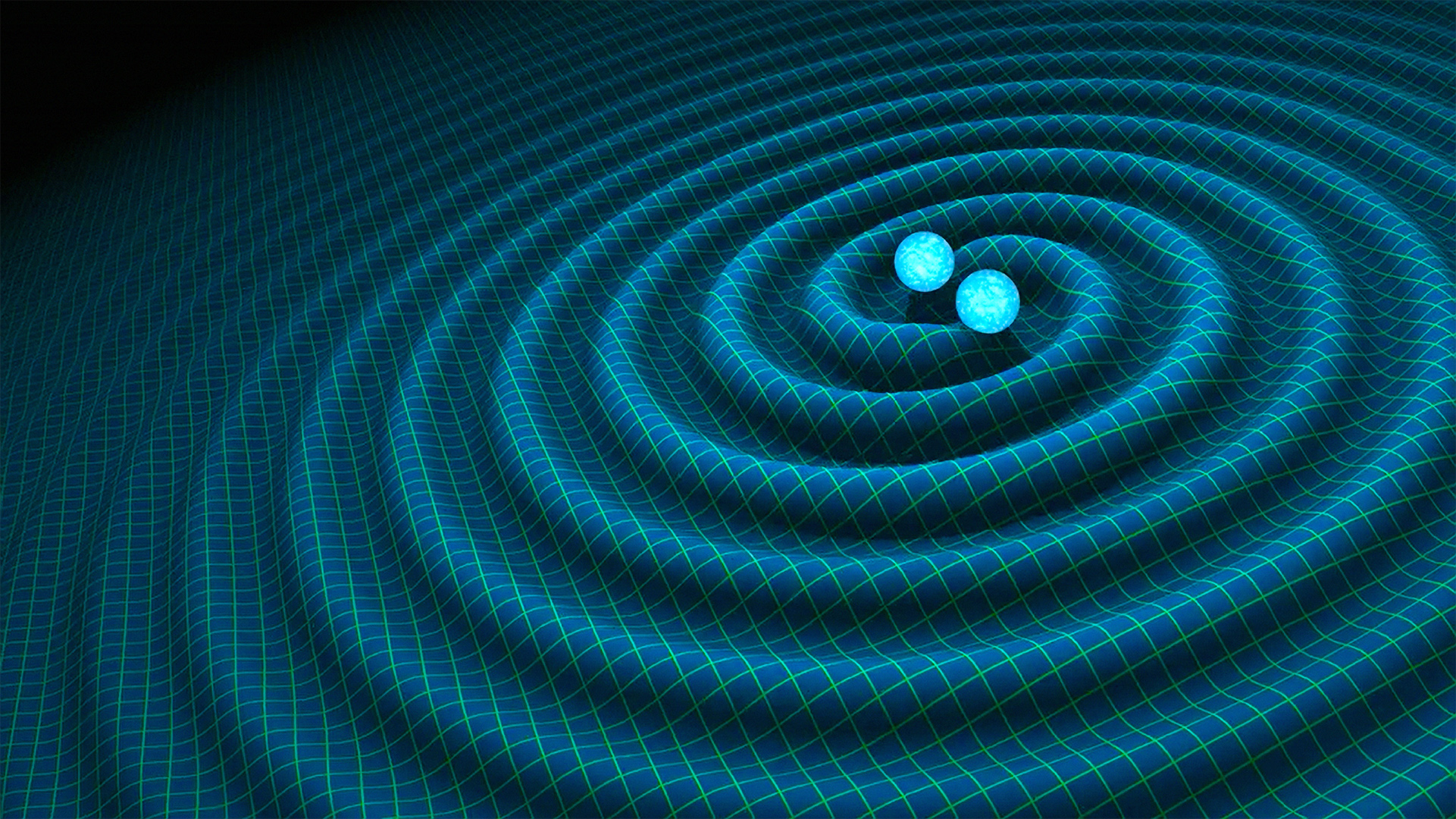
Considering gravitational waves can be referred to as gravitational radiation, it might have you wondering if they have any similarity to light or, more accurately, electromagnetic radiation.
Waves are at the heart of both types of radiation, and they have properties like wavelength, the distance between two peaks in a wave, and frequency, the number of peaks that pass a set point within a set unit of time. So, just as there is a whole electromagnetic spectrum comprised of electromagnetic radiation of different wavelengths and frequencies, there is also a gravitational wave spectrum.
What's more, just like electromagnetic waves, gravitational waves can possess polarization. Polarization refers to the direction in which the wave is orientated as it propagates. Gravitational wave polarization can be either right- or left-handed, meaning the wave can rotate clockwise or anticlockwise in relation to its direction of propagation.
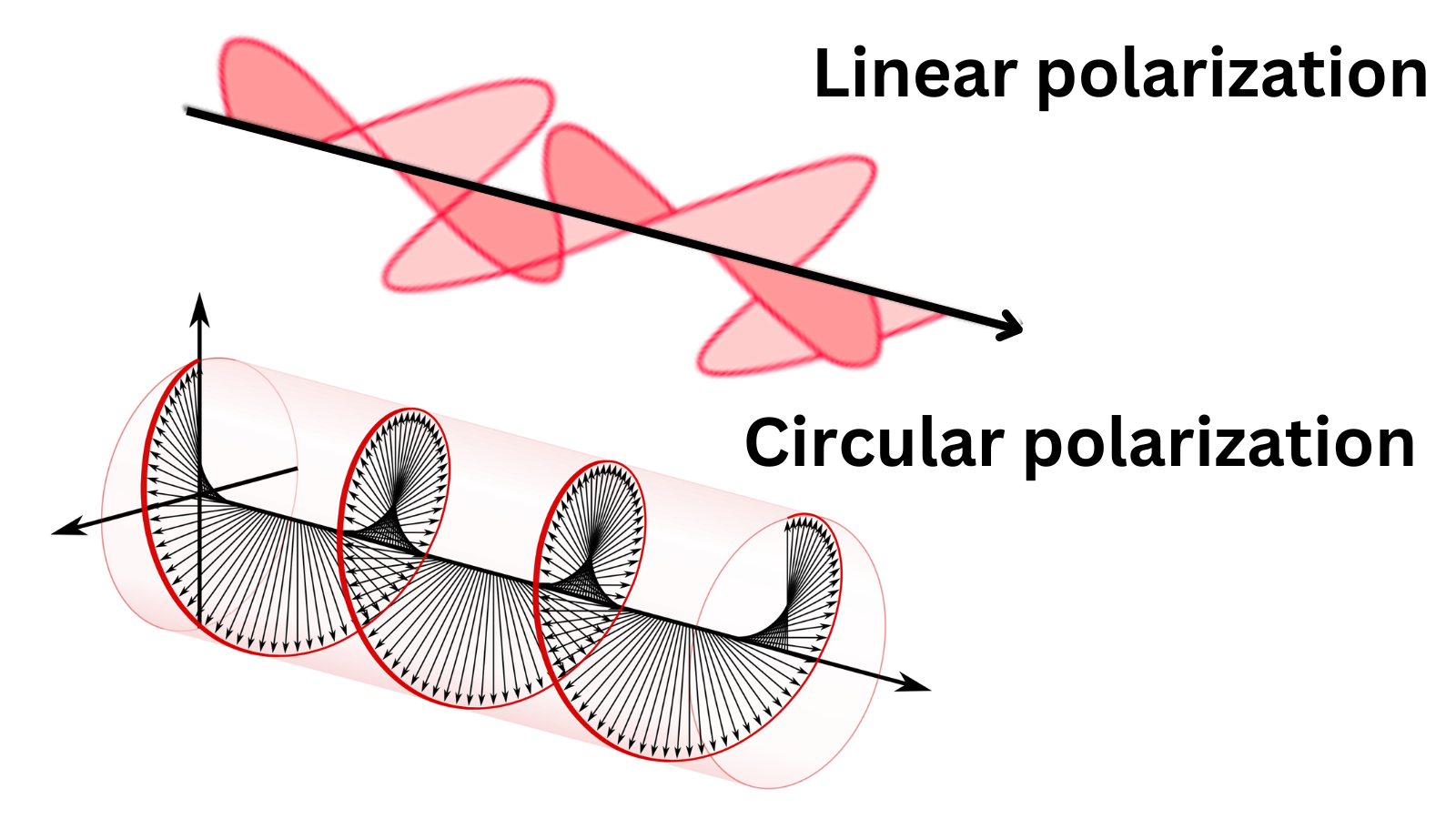
When black holes collide and merge, they can produce an excess of gravitational waves with one polarization, thus individually breaking mirror symmetry.
Yet when these excesses are considered en masse, if the Cosmological Principle is correct and mirror symmetry is ubiquitous across the cosmos, then these excesses should cancel each other out. There should be an equal amount of left-handed waves and right-handed waves.
However, if, like in soccer, black hole mergers have a mirror asymmetry that may suggest the Cosmological Principle doesn't hold, and if that is the case, who knows what other theories founded on this principle are wrong?
Mirror Mirror
To test if gravitational waves from black hole mergers do demonstrate a mirror-symmetry-breaking handedness, Bustillo and colleagues measured the polarization of gravitational waves coming from 47 black hole mergers.
The data collected by LIGO and Virgo demonstrated gravitational waves do indeed cancel out excess handedness, showing no directional preference. But, the Cosmological Principle may not be safe yet. Sure, it's 1-0 up at half-time, but the referee hasn't blown the whistle on full-time just yet.
"The statistics are very limited though, so uncertainties are still large," team member Nicolas Sanchis-Gual, from the University of Valencia, said in the statement. "This cosmic soccer game is far from over."
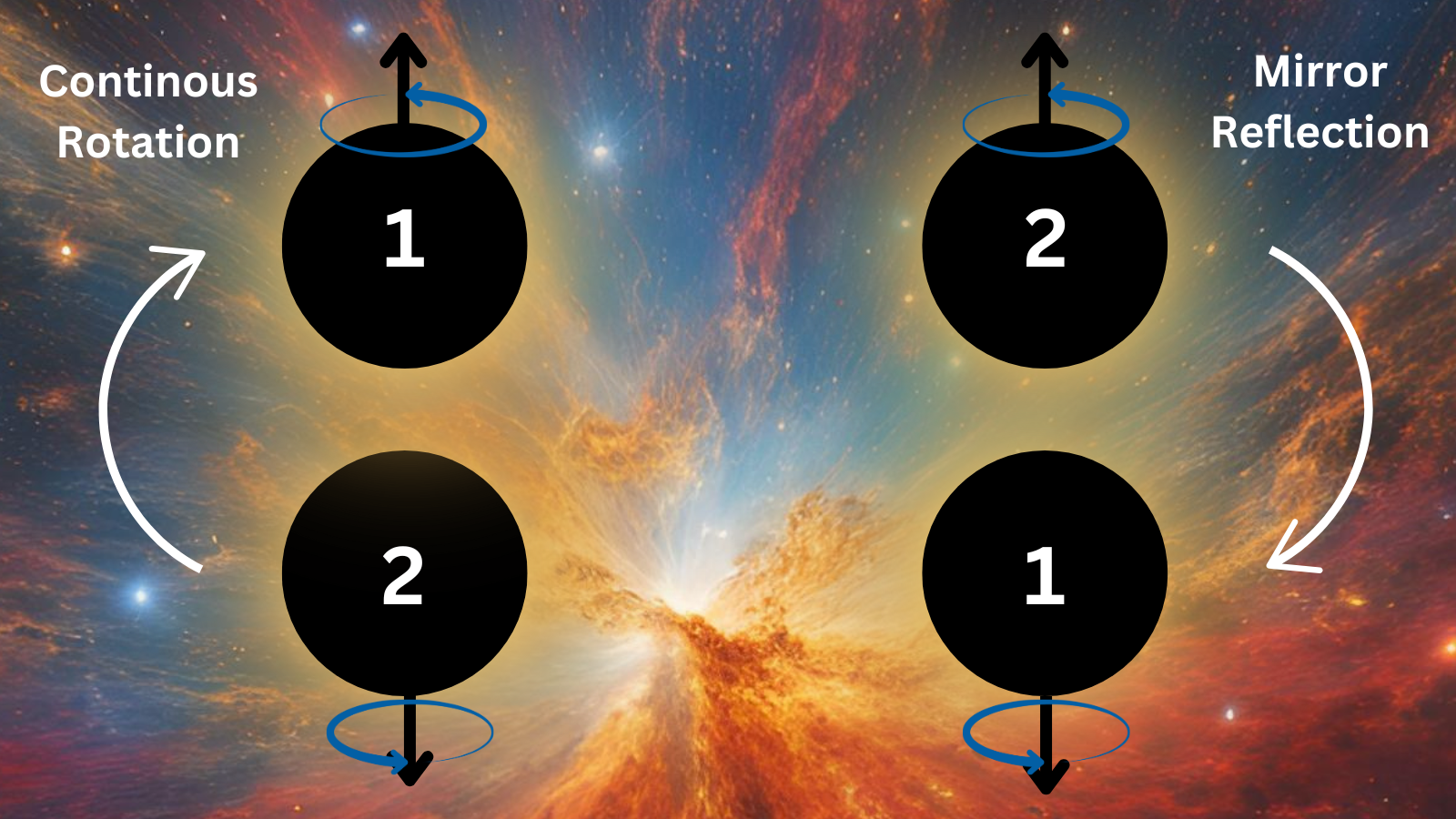
The team found one black hole merger that individually broke mirror symmetry. This event was connected to the gravitational wave signal designated GW200129. This wasn't a huge surprise as this has long been considered a strange, lopsided and uneven merger. The team thinks 82% of the black hole mergers they observed must show either left-handed or right-handed gravitational waves, even though they couldn't identify these systems.
"It is kind of natural that GW200129 breaks mirror symmetry, as this system is known to have a precessing [wobbling] orbital plane," Koustav Chandra, team member and a scientist at Penn State University, said in the statement. "However, our result indicates that a lot of mergers also break it, suggesting that these could also have precessing orbital planes.
"These unexpected results could have far-reaching implications, as precession is a signature of hierarchical formation of black holes."
One region of physics in which the team's results could have an influence concerns the unification of general relativity and quantum physics.
While general relativity is the best description we have of gravity and the cosmos on large scales, quantum physics is the best description humanity has of the sub-atomic universe. Yet, as robust as both theories are, they don't unite. That's primarily because there is no confirmed "quantum theory of gravity."
This research could help in that regard, and it could also reveal why estimates of the rate at which the universe expands can vary wildly, a problem called the "Hubble tension."
"In a previous study, we demonstrated that mirror asymmetric mergers could produce a net emission of polarized photons from the quantum vacuum through a process similar to Hawking radiation," del Rio said. "Our study has identified the first viable source — GW200129 — that can produce this effect."
The team's research was published on Jan. 23 in the journal Physical Review Letters.
Join our Space Forums to keep talking space on the latest missions, night sky and more! And if you have a news tip, correction or comment, let us know at: community@space.com.

Robert Lea is a science journalist in the U.K. whose articles have been published in Physics World, New Scientist, Astronomy Magazine, All About Space, Newsweek and ZME Science. He also writes about science communication for Elsevier and the European Journal of Physics. Rob holds a bachelor of science degree in physics and astronomy from the U.K.’s Open University. Follow him on Twitter @sciencef1rst.
